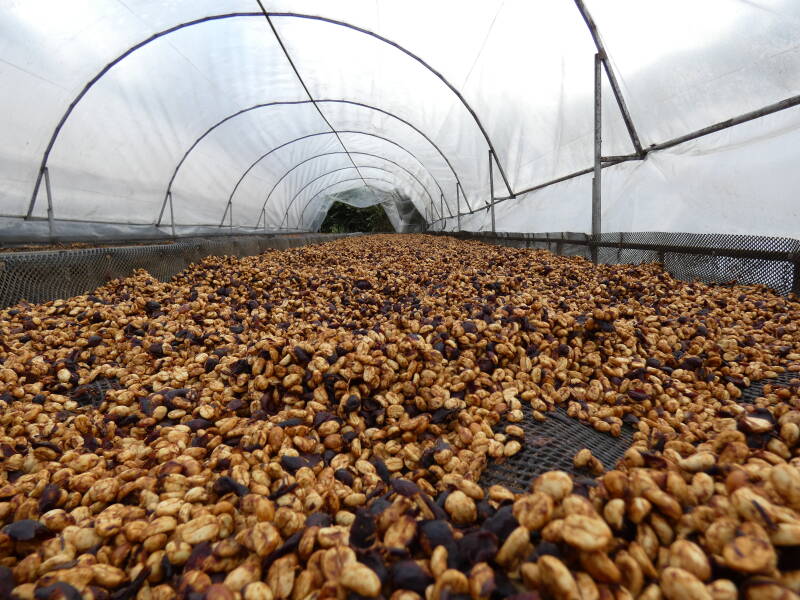For decades, Costa Rica has been celebrated as the birthplace of honey processing—a distinctive technique involving the careful pulping of coffee cherries and their subsequent drying with varying levels of mucilage intact.
More than just a method to refine coffee characteristics, honey processing in Costa Rica emerged out of necessity and innovation.
In 2008 the landscape changed drastically when an earthquake triggered severe water shortages and prompted stringent government-mandated conservation measures.
In response to the crisis, groups of forward-thinking farmers turned to processing methods prevalent in regions facing similar water scarcity challenges. Initially met with skepticism due to unfamiliar flavor profiles labeled as "unclean" or "wild," these honey-processed coffees gradually won over critics as their unique characteristics were discovered and appreciated.
Unsurprisingly, honey coffees gained traction rapidly.
Specialty coffee roasters worldwide eagerly integrated Costa Rican honey-processed offerings into their portfolios, while these coffees began commanding top prices at auctions, signaling their growing esteem and demand among discerning coffee enthusiasts.
The process of honey processing typically involves the following steps:
-
Harvesting: Ripe coffee cherries are selectively handpicked from the coffee trees.
-
Pulping: The outer skin of the coffee cherries is removed, exposing the mucilage-covered beans inside.
-
Sorting: The coffee beans are sorted to remove any underripe or defective cherries.
-
Drying: Instead of fully washing the mucilage off the beans, they are laid out to dry with varying degrees of mucilage still attached. The beans are carefully monitored and turned regularly during the drying process to ensure even drying and prevent fermentation.
-
Milling: Once dried, the coffee beans undergo milling to remove any remaining mucilage and parchment.
-
Sorting and Grading: The processed beans are sorted based on size, density, and quality before being packaged for export.
Honey processed coffee can be further categorized based on the amount of mucilage left on the beans during drying. These categories include white honey (least mucilage removed), yellow honey, red honey, and black honey (most mucilage left on the beans). The amount of mucilage left on the beans during drying influences the flavor profile of the resulting coffee, with more mucilage typically resulting in sweeter, fruitier flavors.



Add comment
Comments